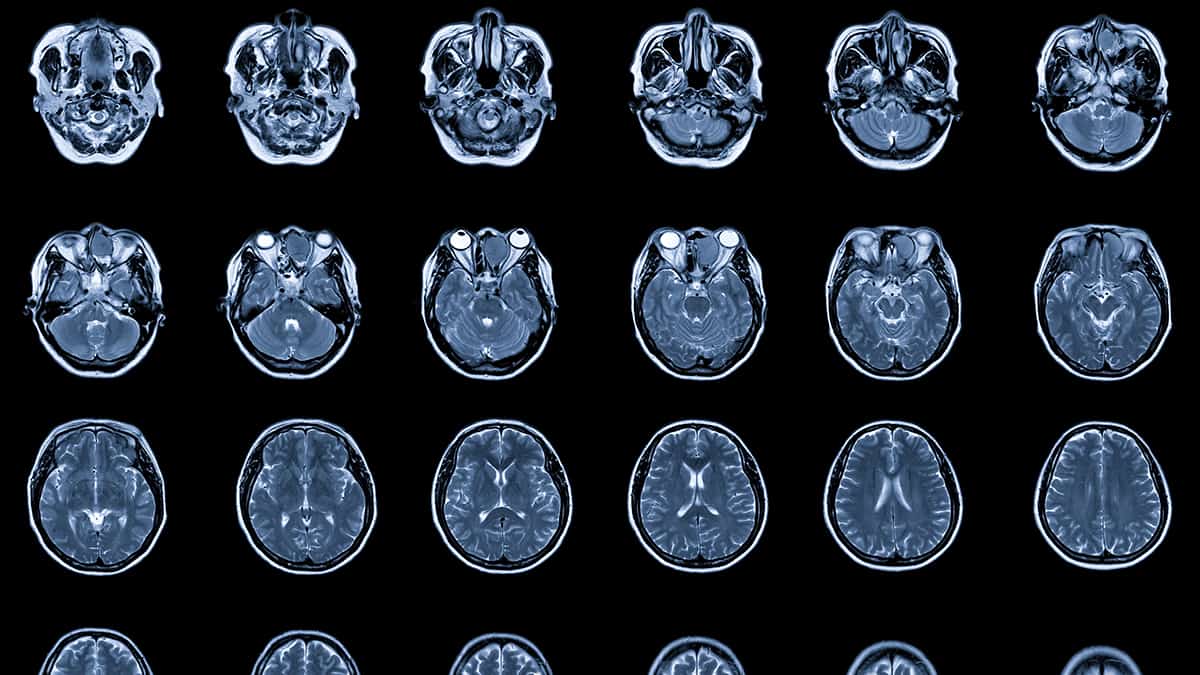Restless Leg Syndrome: What Is It, What Causes It, and What Can You Do About It?
Physical Health

For some people, laying down to sleep comes with uncomfortable sensations that make them feel like they have to move their legs. This experience, called restless leg syndrome (RLS) or Willis-Ekbom Disease, can keep a person awake at night, often tossing and turning as they cannot get comfortable.
Don’t confuse RLS with leg cramps — these are two different conditions. Leg cramps are sharp pains that develop when muscles in the legs suddenly contract. Leg cramps may last a few seconds to a few minutes. On the other hand, RLS leads to ongoing feelings of discomfort.
About five to 10 percent of adults in the U.S. have restless leg syndrome. The condition also affects two to four percent of children. Women develop this condition more often than men. Additionally, older adults are more likely to develop RLS and to have worse symptoms. More than four out of five people with RLS also develop another sleep disorder called periodic limb movement of sleep (PLMS). PLMS causes the legs or arms to regularly move and jerk while a person is sleeping.
Symptoms of Restless Leg Syndrome
RLS causes uncomfortable feelings in the lower limbs. People with RLS feel like they can’t control the urge to move their legs. Often, moving around makes the discomfort disappear, but the feelings usually return once movement stops. People with RLS may also describe feelings of pulling, twitching, crawling, throbbing, burning, or itching. Occasionally, RLS may also affect muscles in the arms or other parts of the body.
RLS symptoms often appear later in the day, in the evening or at night. A person may notice restless legs when they are sitting or lying down. Some people may wake up in the middle of the night with twitchy legs and have a hard time falling back asleep. RLS symptoms may also pop up during the day when a person has been sitting for a long time, such as on an airplane flight.
Restless leg syndrome may also lead to additional problems during the day. RLS often prevents a person from getting a good night’s sleep, which can lead to memory loss, difficulty focusing, and mood changes. Additionally, when RLS goes untreated, it impacts productivity at work.
Long-Term Effects of RLS
When people don’t get enough sleep, they are also at risk for physical and mental health problems, including diabetes and depression. One study found that people with restless leg syndrome were four times more likely to develop heart disease or experience a stroke. This group was also at risk for developing kidney disease.
Restless Leg Syndrome Causes

Normally, the brain “talks to” the muscles in the legs using nerves. Experts believe that RLS develops when the nerves in the leg muscles can’t communicate with the brain as well as they should. Doctors don’t know why most cases of RLS occur. However, in some cases RLS is linked to genetics, an underlying health condition, or a particular medication.
Genes and Restless Leg Syndrome
Researchers have identified certain gene changes that increase a person’s risk of developing RLS. It’s not yet clear how these gene changes lead to RLS, but they may affect the way nerves develop before a person is born. There also may be other genetic factors that scientists have not yet discovered.
This means that RLS can be passed down from parents to children. Most people diagnosed with the condition have a family member who also has RLS.
Health Conditions Leading to RLS
RLS is often linked to low levels of iron. The brain uses this mineral to make a dopamine, a brain chemical, often called a neurotransmitter. Dopamine is needed in order for the brain to control muscle movement. When a person doesn’t have enough iron in the brain, this process may be disrupted. Other vitamin and mineral deficiencies have also been linked to RLS. For example, people with low levels of magnesium or folate, a B vitamin, may also experience RLS symptoms.
Other disorders may also lead to restless leg syndrome. These include:
- Diabetes
- Multiple sclerosis
- Rheumatoid arthritis
- End-stage renal disease (loss of kidney function)
- Parkinson’s disease
- Peripheral neuropathy (nerve damage)
Another RLS cause is pregnancy. In this case, the symptoms usually disappear a couple of weeks after giving birth. Some experts think that RLS happens during pregnancy as a result of low iron and folate levels, since pregnancy requires higher levels of these nutrients.
Medications That Cause RLS
Restless legs may be a side effect of certain medications. These can include:
- Antidepressants
- Antipsychotics
- Anti-nausea drugs
- Cold medications
- Allergy medications
- Drugs used to treat hypertension (high blood pressure)
If you notice RLS symptoms after trying a new medication, talk to your health care team. Your doctor may be able to prescribe you an alternate medication that doesn’t lead to restless feet and legs.
How Is RLS Diagnosed?

Doctors may perform a physical or neurological exam if they suspect that a person has RLS. During this time, the doctor will usually ask about what symptoms a person is experiencing, how often the symptoms occur, what medications a person is using, and the person’s personal and family health history.
Doctors can test iron levels with a simple blood test. These tests may show that low iron stores have caused red blood cell levels to drop, in a condition known as iron-deficiency anemia. Blood tests can also be used to look at other aspects of health, including kidney function.
Doctors often recommend a sleep study in order to diagnose sleeping problems. During this test, a person will stay overnight in a clinic or hospital. Also, home sleep studies can be conducted in one’s own bed. Electrodes can help measure body functions like heart rate and brain waves. A video camera may also be used to capture movements while a person sleeps. This test may indicate that a person has RLS or another sleep condition such as sleep apnea or narcolepsy.
Restless Leg Syndrome Treatments

RLS usually can’t be cured. However, it may be possible to rectify the underlying root cause of the problem. Symptoms may briefly disappear, but they frequently return later. However, remedies are available to help relieve symptoms and improve sleep. Some people with mild symptoms may not need any treatments.
Immediate Treatments
Moving around usually leads to instant relief for restless legs. If you are having a hard time falling asleep because of RLS symptoms, try getting up and walking around for a little bit. Massaging or stretching the leg muscles may also calm the uncomfortable sensations.
Some people also feel better after taking a hot bath. Using a hot water bottle or ice pack may calm restless legs.
Lifestyle Changes
RLS may be partly caused by environmental or lifestyle factors. Some substances, including alcohol, caffeine, and tobacco, may cause RLS or worsen symptoms. Drinking less alcohol and coffee and quitting smoking may help symptoms appear less often. Additionally, getting more physical activity throughout the day can relieve symptoms.
Practicing good sleep hygiene may also make it easier to fall asleep. Try to follow a regular sleep schedule, laying down to bed at the same time each night and setting an alarm for the same time each morning. Additionally, try to keep your sleeping area cool, dark, and quiet.
Diagnosing Other Health Conditions
When RLS is caused by another health condition, diagnosing and treating that condition often provides relief. A good first step when looking for RLS treatments is visiting your doctor and making sure you are in good health.
Iron Supplements
When RLS is caused by low iron levels, taking iron supplements can help. These supplements can be purchased over-the-counter. For those with very low levels of iron, intravenous (IV) iron treatments can also help boost iron levels.
Even when blood tests show that a person has normal iron levels, doctors may still recommend iron supplements. Studies have shown that iron treatments can help everyone, regardless of iron test results. Researchers think that some people may have normal levels of iron in the blood, but low levels of this mineral in the brain. For this reason, iron supplements are often the first treatment a doctor will suggest.
Other Vitamin or Mineral Supplements
Researchers have found that taking folate supplements may also improve RLS symptoms. This treatment has been effective both in people with genetic cases of RLS that run in families, as well as RLS that develops due to underlying health conditions. Folate deficiencies may also be responsible for RLS symptoms during pregnancy. One study found that pregnant women who took folate supplements were much less likely to experience RLS symptoms.
It’s possible that magnesium levels may also be linked to RLS. However, studies have reported conflicting results — some have found that magnesium supplements help people with RLS get a better night’s sleep, while others have not found magnesium to be effective. However, these supplements may be worth a try for some people. Make sure to take the recommended dose of any vitamin or supplement, as high doses can make you sick.
Medications for Restless Leg Syndrome
There are several different drug options that may change the levels of certain brain chemicals in order to help with restless leg syndrome. Doctors may prescribe:
- Anti-seizure medications such as Horizant (gabapentin enacarbil), Neurontin (gabapentin), and Lyrica (pregabalin)
- Medications that affect levels of dopamine, including Requip (ropinirole), Mirapex (pramipexole), and Neupro (rotigotine)
- Antidepressant or anti-anxiety medications
- Pain medications, including low doses of opioid drugs
These medications often work in different ways. They may affect different brain chemicals or change the way different sensations feel. Additionally, each of these drugs can lead to varying side effects. People with RLS may need to try more than one option before they find something that works well for them.
Drugs that alter dopamine levels often work well short-term but may increase symptoms in the long run. People who use these drugs regularly may need to take increasingly higher doses in order to feel an effect. If this side effect develops, a person may need to stop taking the medication and switch to a different one. Anti-seizure medications don’t have this effect and seem to work better over time to keep restless legs under control.
Medical Devices
Researchers have developed a couple of devices for RLS treatment. Some have even been approved by the U.S. Food and Drug Administration (FDA). You need a prescription from your doctor in order to get these devices.
One device, the Relaxis pad, is a pillow-sized pad that is placed under the legs. The device vibrates as you fall asleep. Some researchers think that the vibrations cause the leg muscles to send certain signals back to the brain. These signals may override the other signals caused by RLS that lead to discomfort. One study found that the Relaxis pad worked as well as RLS drugs, and came with fewer side effects.
The Restiffic foot wrap is another device designed to treat RLS. The wrap puts pressure on muscles in the bottom of the foot. Scientists believe that this feeling of pressure sends signals to the brain, which then tells the leg muscles to relax. In one small clinical trial, the device improved RLS symptoms to a greater degree than medication.
Conclusion
If you are plagued by restless legs at night, it may help to talk to your health care team. Your doctor can recommend or prescribe various treatments and check to make sure RLS isn’t caused by another health problem.
For many people, restless leg syndrome can be treated with simple at-home solutions, including taking iron supplements, getting more exercise, and avoiding alcohol, caffeine, and tobacco. When these strategies don’t work well enough to manage RLS, medications or devices may be effective.